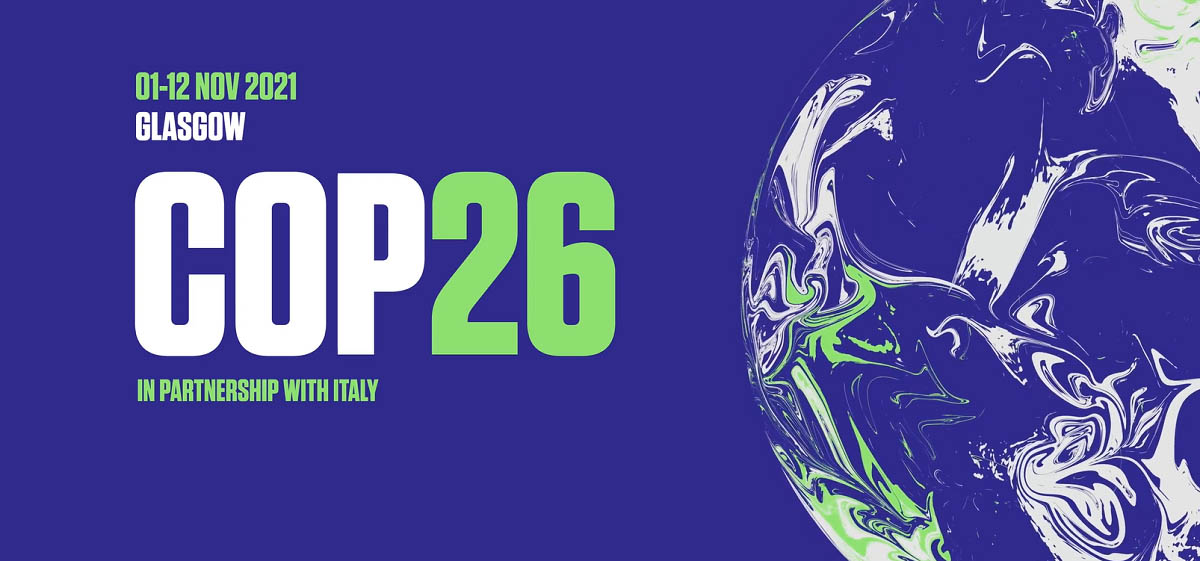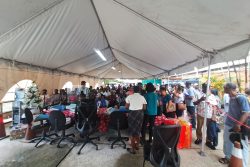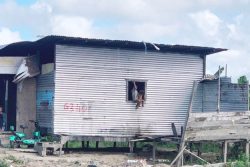As a prelude to Guyana’s participation in the COP26 summit next week in Scotland, President Irfaan Ali will today unveil a new and “expanded” version of the PPP/C’s premier climate change initiative – the Low Carbon Development Strategy (LCDS).
The announcement was made yesterday by the Office of the President and it stated that the launch will be held virtually today and can be watched on a number of social media platforms as well as on television.
The document of proposed green initiatives to assist in Guyana’s mitigation of, and adaptation to, climate change, will be made public after the launch and persons will have four months to review it and provide feedback, according to Vice President Bharrat Jagdeo.
“Anyone would be able to access it and give views on the document,” Jagdeo told Stabroek News yesterday.
He said that from the recommendations made the final document would be crafted, and it is for this reason that government has made a decision that a new Nationally Determined Contribution (NDC) would not be finalized until this process is completed.
NDCs are a country’s plan for climate action as required by the Paris Agreement on Climate Change.
“We will not submit our NDC before COP,” he said while explaining the rationale behind the decision. “We can use the positions of the LCDS to make commitments in the NDCs.”
In an exclusive interview with Stabroek News earlier this month, Jagdeo had announced that work was ongoing on a new LCDS draft.
He had also said that government was simultaneously preparing a new NDC to go out to public consultation and it would have potentially included a pledge to cut carbon emissions by 50% by 2025 – a radical slashing from the previous commitment of 100% made by the APNU+AFC government in 2015.
The reduction, he had argued, was because the first NDC was all talk without action to support it, while contending that it was wild and unrealistic and filled with unachievable goals. Jagdeo had said that despite pledging to move to renewable energy by 2025, the coalition government had no plans in place to achieve that goal.
He noted that the Amaila Falls Hydropower Project (AFHP), which was the PPP/C’s plan to increase Guyana’s share of renewable energy, was scrapped and the coalition did not replace it with another renewable energy project. “So we are not going to achieve the pledge made by APNU,” he asserted.
Nonetheless, government’s representative on environment confirmed that Guyana will be submitting a new NDC this year, which he says will be more realistic in three focus areas, with a possible fourth expected to be added before the final draft is submitted.
Jagdeo acknowledged that the Government is a bit worried that the new NDC will make it seem as though Guyana is lowering its ambitions, rather than raising them. He explained that even though that is not the case, it will have to be explained to global leaders when he addresses the issue.
The three current focus areas include forests, energy and transport. Jagdeo explained that the new pledges will be implemented in phases and based on estimated calculations, Guyana should be able to cut its carbon emissions in the energy sector by 50% by 2025 by switching to natural gas. The government’s plan to use natural gas for electricity from offshore oil operations has raised concerns about its commitment to cutting the release of greenhouse gases. Natural gas is cleaner than the Heavy Fuel Oil currently in use however it will still release carbon dioxide and other pollutants.
In addition, the Vice President said when the hydropower project comes online, it is possible that Guyana will be able to cut carbon emissions by 70% by 2027.
And as President Ali leads a delegation to the Scotland conference, he is expected to tell of future plans for climate change that this country has already in motion.
Apart from the 2025 goal of achieving more renewable energy, Guyana had also pledged to implement its climate resilience strategy and action plan; upgrade infrastructure and other assets to protect against flooding; restore mangroves; implement hinterland adaptation measures; develop and implement early warning systems; enhance weather forecasting including microclimate studies and localised forecasting; develop and introduce crop varieties which are flood resistant, drought tolerant, and disease resistant; develop environmental and climate change awareness programmes at all levels, and also, develop innovative financial risk management and insurance measures.
The NDC also said that unconditional contributions will be made and these include basic work on integrated water management infrastructure, which includes the construction, rehabilitation and maintenance of conservancies and canals, and sea defences, water supply and sanitation, as well as the introduction of new agricultural techniques such as hydroponics and fertigation.
In addition, it was stated that climate change considerations will be mainstreamed in all sectors of national development.
Jagdeo will lead technical discussions on how Guyana will utilise the framework set out for financial, technical, and capacity building so that it can reduce this country’s greenhouse gas emissions in order to reach goals of the Paris Agreement while building resilience to adapt to the impacts of rising temperature.






